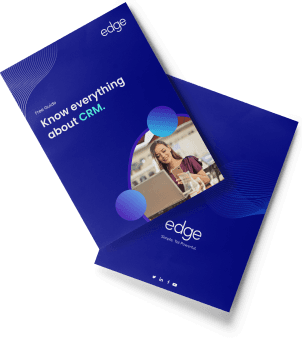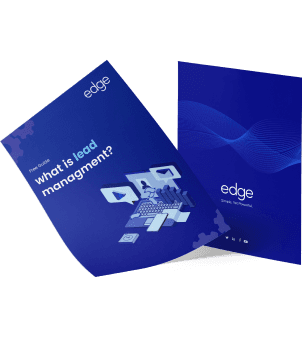The COVID pandemic has significantly disrupted industries and affected corporate procedures. The initial assumption of a temporary interruption followed by a return to normalcy has given way to the present belief that government-imposed travel and distance restrictions will remain in place for the foreseeable future.
Sales companies have evolved in their operations. According to a poll of B2B customers in Italy, clients are reconsidering how they communicate with their suppliers. Similarly, customers are increasingly preferring non-face-to-face communication with supplier businesses, including altogether avoiding human encounters (including remote). B2B customers favoured technology-enabled self-service over traditional interactions with salespeople, and they preferred digital conversations with salespeople when self-service was insufficient. These digital communications included live chats, emails from salespeople, and texts from sales reps, in that order of preference. This shift in B2B customer behaviour has prompted sales organizations to reconsider customer and prospect engagement, go-to-market strategies, and resource allocation.
The business-to-business landscape of 2019 is almost unrecognizable. Organizations sought creative strategies to keep the sales ball running in the aftermath of the COVID-19 outbreak and the inability to facilitate in-person sales. As a crisis response, businesses of all sizes adopted new technology, methods, and engagement strategies - all under the digital umbrella. Digital is now the core of B2B sales for expanding transactions, with sales development at the forefront.
McKinsey, Gartner, and Forrester have all released reports on this disruptive development, concluding that B2B selling is now all about predictable and scalable revenue production rather than old-school superstar salesmen.
What is causing this?
Because digital provides a streamlined, consistent, and personalized purchasing experience, many businesses' digital catch-up efforts in response to COVID-19 have been eye-opening in terms of developing solutions to keep up with the ever-changing market.
It's just that B2B vendors don't want to stay in the digital mindset. Customers believe in the efficacy of digital since it matches the B2C experience they have had for many years. According to a McKinsey report, 80% of B2B consumers are now completely content to engage with vendors remotely or through digital self-service.
Before the COVID pandemic, a recent study focused mostly on how improvements in digital technology and changing consumer habits have pushed sales organizations to focus on digital transformation and how Artificial Intelligence (AI) might assist in providing value during the sales process. Traditionally, the sales literature has also investigated the critical roles that digital tools such as CRM and social media play in driving sales force success. Unlike most B2B firms, which have been more conservative in introducing digital solutions, the COVID pandemic has forced sales organizations to respond rapidly and embrace digital transformation.
The rapid use of digital technologies has aided B2B firms in implementing the following:
Better customer and supplier support
Increased responsiveness to new trends and markets
Adaptive sales funnels based on consumer history and behaviour
Simply, purchasers have grown accustomed to new forms of transacting. Prospects have a more easy and gratifying buying experience with self-service choices, multi-channel environments, individualized customer journeys, video and live chat, and redesigned media and landing sites.
Meanwhile, B2B firms have benefited from deploying new digital technologies such as sales intelligence platforms, sales enablement platforms, and sales engagement platforms, which have led to more intelligent, efficient, and predictable sales processes.
Before moving ahead, do you want to attend a seminar on "How to leverage sales of your organization using tech in a post-COVID era"? Register your seat here.
The advancement of the sales development team
According to the Bridge Group's 2021 Sales Development Report, there has been significant growth in the number of SDRs on the payroll, primarily remote, since COVID-19. This is especially critical for developing businesses. In 2021, 64% of firms questioned said they use remote sales development representatives (SDRs), up from 48% in 2018. Furthermore, 23% of firms intend to implement totally remote SDR groups.
The sales development role has emerged as a top concern for businesses looking to exploit new ways of working and converting leads.
The shift toward sales development makes sense in the context of the pandemic, where reserved and economically stressed customers would only purchase if all of their boxes were checked. This meant greater inspection, fewer and longer sales opportunities, more touchpoints, and, eventually, more persuasion. Sales development succeeds in this area because they are on the cutting edge of using new technology that allows them to:
Direct leads further up the funnel
Maintain consistent participation
Keep leads in the pipeline for a longer period of time
Increase the rate of early pipeline and lead creation activity.
Locate fresh lead possibilities
Increase cross-selling and upselling
Tips For Improving Sales Management
To address the various difficulties that a sales organization encounters, the following recommendations:
improve customer service;
address salespeople and customers' opposition to change;
comprehend the significance of technology;
improve salesperson training and growth;
Build an adaptable salesforce.
Improve Customer Service
Salespeople should be encouraged to be more proactive in contacting customers during times of change to share already-realized value with them and discover future areas of value creation. These initiatives will maintain customer interest. Sales organizations shifting to new business or subscription-based models may need to help salespeople in areas other than selling, such as follow-up. To assist consumers in navigating the changes, the introduction of new frontline functions, such as customer success managers, should be considered.
Address salespeople and customers' opposition to change
Sales managers will almost certainly face salesperson resistance to new projects and other changes. Sales managers should be proactive in communicating with their salespeople, prepare them for impending changes, clearly define the benefits of the changes to their salespeople, provide the required salesperson support, and, most importantly, assist them in managing the changes. Sales managers should also be prepared to teach and support their salespeople on dealing with customers who are resistant to change. Sales managers should support salespeople's efforts to assist clients in managing changes, including communication support. Sales managers may need to reconsider salesperson ratings depending on customer and salesperson opposition to technology.
Comprehend the significance of technology
It is vital for sales managers to understand that while technology can facilitate the sales process, its success is dependent on the salesperson-customer contact. Failure to realize the significance of the salesperson-customer contact would almost certainly result in lower productivity, greater salesperson stress, and employee attrition. Technology platforms can be used to onboard new salespeople, retrain existing ones, and promote peer-to-peer coaching; these platforms can be tailored to the salesperson's learning ability and comfort level with these new digital platforms.
Improve salesperson training and growth
Digital selling requires salespeople to be trained. Inside salespeople use technology to improve the sales process, which should be highlighted by sales managers. Social media and social networks are becoming increasingly important for salespeople to reach a wider audience, and sales managers should teach their salespeople successful social selling strategies. Salespeople should be encouraged to become thought leaders by producing material that strengthens their personal brand and is valued by consumers. Salespeople who are hesitant to create such content may require assistance from their sales managers and marketing peers.
Build an adaptable salesforce
As customers place more demands on suppliers, conduct more online research, and invest more in e-commerce projects, sales organizations must reconsider how they approach their customers. We believe that by combining traditional and remote sales, as well as e-commerce and m-commerce solutions, an adaptive sales organization can provide more convenience for its clients while also reducing the stress on its salespeople. Marketing materials tailored to individual persons in the customer's decision-making unit could also be regarded as an important component of sales enablement activities. A streamlined approach to knowledge management is crucial for the success of such projects. Lead indicators are also useful for monitoring the success of change strategies and new digital transformation efforts.
Conclusion
The COVID pandemic is an unusual occurrence that has impacted businesses and traditional sales methods. Businesses should be better prepared for similar external shocks in the future by implementing more robust processes, planning, and mitigations. This article aims to assist B2B firms in changing their sales processes, allowing them to achieve long-term competitive advantage despite poor market situations. Creating and operating a more adaptable and hybrid salesforce is critical to sustaining and improving B2B sales during such periods.













